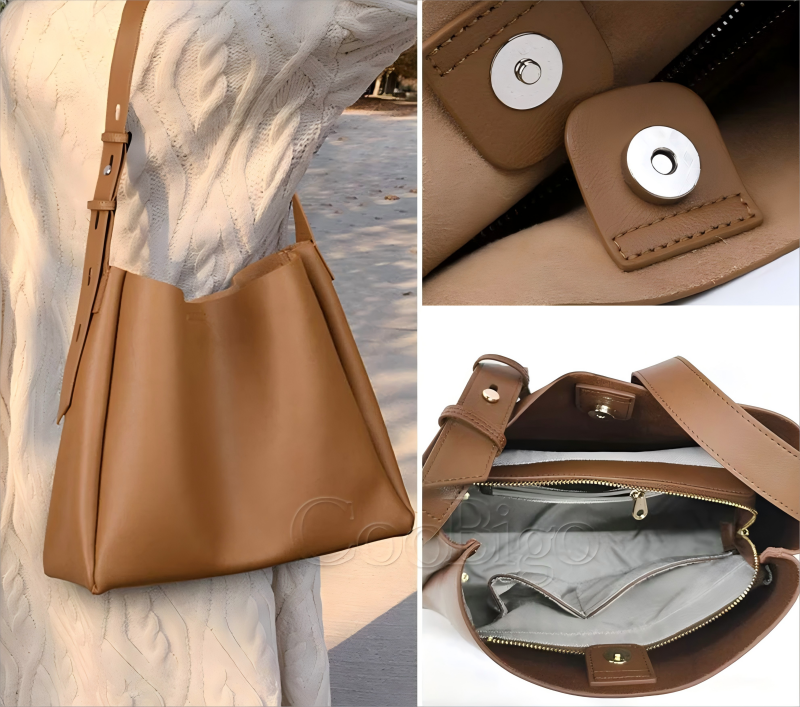Japanese and South Korean Handbag brands
Japanese and South Korean handbag and luggage brands have gained global recognition for their unique blend of style, functionality, and craftsmanship. These brands often reflect the cultural values of their respective countries, offering products that are not only aesthetically pleasing but also practical and durable.
Japanese handbag brands are known for their minimalistic design, attention to detail, and superior craftsmanship. Brands like Porter-Yoshida & Co. exemplify this approach with their focus on functionality and durability. The brand is renowned for its high-quality materials and meticulous construction, producing bags that are both stylish and long-lasting. Porter's designs are often understated, with a focus on clean lines and subtle details, making them versatile for various occasions.
Another notable Japanese brand is Anello, which has gained popularity for its innovative designs and practicality. Anello bags are characterized by their wide-opening frames, making them easy to access and organize. The brand combines modern design with functionality, offering a wide range of colors and styles that cater to different tastes. Anello’s bags are particularly popular among young professionals and travelers, thanks to their lightweight and versatile designs.
South Korean handbag brands, on the other hand, are known for their trendy and fashion-forward designs. Brands like Gentle Monster and Beanpole have made significant strides in the global market, offering products that reflect South Korea’s dynamic fashion scene. Gentle Monster, originally known for its eyewear, has expanded into the handbag market with designs that are bold, innovative, and often feature unconventional shapes and materials. The brand's handbags are a statement of individuality and creativity, appealing to fashion-conscious consumers who seek something unique.
Beanpole, a brand under the Samsung C&T Fashion Group, is known for its classic and sophisticated designs. The brand often draws inspiration from British fashion, blending it with Korean aesthetics to create bags that are elegant yet practical. Beanpole’s bags are popular among professionals for their refined look and high-quality materials, making them suitable for both work and casual settings.
Both Japanese and South Korean brands emphasize functionality, but they approach it in different ways. Japanese brands tend to focus on minimalism and durability, creating bags that are timeless and versatile. South Korean brands, meanwhile, lean towards trendy and eye-catching designs, often incorporating innovative elements that set them apart in the global market.
Together, Japanese and South Korean handbag brands offer a diverse range of products that cater to different tastes and needs, making them a significant force in the global fashion industry. Whether you prefer the understated elegance of Japanese design or the bold creativity of South Korean fashion, these brands provide high-quality options that resonate with consumers around the world.
Japanese and South Korean handbag and luggage brands are known for their meticulous selection of hardware, emphasizing both quality and design. Here are some commonly used hardware components in their products:
1. Buckles
Adjustable Buckles: Both Japanese and South Korean brands use adjustable buckles made from high-quality metal or durable plastic. These are commonly found on straps of backpacks, tote bags, and shoulder bags, providing flexibility in fit and comfort.
Decorative Buckles: South Korean brands, known for their trendy designs, often use decorative buckles in unique shapes or with intricate detailing to add a fashionable touch to handbags.
2. D-Rings and O-Rings
D-Rings: These are widely used in both Japanese and Korean bags for attaching straps, keychains, or other accessories. They are typically made from stainless steel or zinc alloy, ensuring strength and resistance to wear.
O-Rings: Similar to D-Rings, O-Rings are used for attaching handles or decorative elements, adding a sleek and modern look to the bags.
3. Clasp Closures
Magnetic Clasps: Magnetic closures are popular in Japanese and Korean handbags, providing a secure yet easy-to-use fastening solution. These are often concealed to maintain a clean and minimalistic appearance.
Turn Locks: Frequently seen in luxury bags, turn locks offer both security and style. South Korean brands often use them as a focal point in the design, sometimes featuring unique shapes or embellishments.
4. Studs and Rivets
Decorative Studs: Used by South Korean brands to add an edgy or fashionable element to their bags, these studs can be found on the edges, straps, or even covering the entire surface of the bag.
Rivets: Japanese brands often use rivets to reinforce stress points on their bags, ensuring longevity and durability. These are typically made from brass or stainless steel and are chosen for their subtle yet strong appearance.
5. Handles and Straps Hardware
Swivel Hooks: These are used in detachable straps, allowing the strap to rotate without twisting. Both Japanese and Korean brands use high-quality swivel hooks to enhance the functionality and durability of their products.
Dog Clips: Commonly found on crossbody and shoulder bags, dog clips are favored for their secure attachment and ease of use. They are often made from plated metal to resist tarnishing.




